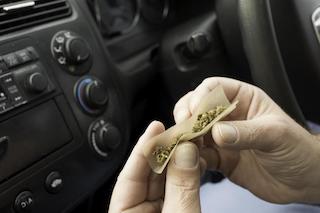A survey commissioned by road safety charity IAM RoadSmart has revealed that 10 per cent of UK motorists have driven in the 24 hours after taking illegal drugs.
 Britain is in the midst of a drug-driving epidemic, IAM RoadSmart can reveal, with research commissioned by the charity showing that potentially millions of motorists have got behind the wheel after consuming illegal drugs, with the likes of cannabis and cocaine being the most widely used drug-driver substances.
Britain is in the midst of a drug-driving epidemic, IAM RoadSmart can reveal, with research commissioned by the charity showing that potentially millions of motorists have got behind the wheel after consuming illegal drugs, with the likes of cannabis and cocaine being the most widely used drug-driver substances.
The UK’s leading road safety charity surveyed 2,028 motorists on which substances, if any, they had taken within the 24-hours before driving, with a shocking 1-in-10 (10 per cent) of respondents confessing to have drug-driven. This means that, of the 35 million people who possess a full driving licence in the UK, up to 3.5 million motorists may have driven while under the influence of illegal drugs – putting themselves and other road users at risk in the process.
The survey found that cannabis was the most widely used substance of those who confessed to driving while under the influence of drugs, with 1-in-20 (5 per cent) admitting to consuming the drug before driving a vehicle. The next most popular substance was cocaine, followed by ecstasy (MDMA) and speed (amphetamine).
Furthermore, 14 per cent of respondents said that they would be unlikely to stop a friend or family member who was planning on driving after taking illicit drugs.
The findings come in the wake of IAM RoadSmart’s Safety Culture Report, which studies UK motorists’ driving attitudes and behaviours on key issues over time, which discovered that 58 per cent of motorists believe that driving while under the influence of drugs is a bigger problem compared to three years ago.
The number of drug-driving incidents has reached record highs in the UK, with the Department for Transport (DfT) reporting that drug-related collisions and casualties have surged by over 260 per cent in the last decade, with 44 per cent of these offences being committed by previous offenders.

